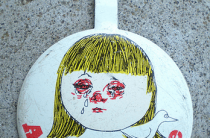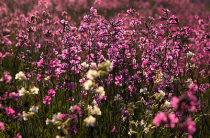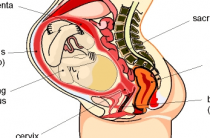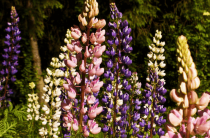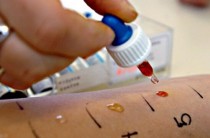Spring allergy to flowering is a fairly common occurrence. It manifests itself when a person with a predisposition to allergies comes into contact with the pollen of a male allergen plant. This pollen contains certain protein structures that are recognized by the patient's immunity as foreign. Medical science calls this disease "hay fever". Unfortunately, every year the statistics on the allergic phenomenon is increasing.
We are accustomed to being allergic only to poplar fluff, ragweed and birch color. Actually, it is not. An allergy can be to the flowering of absolutely any plant, just these cases are the most common. So, in spring, such plants bloom as: snowdrops, lilies of the valley, alder, birch, oak, hazel, willow, maple, aspen, elm, hornbeam, beech, dandelions, etc. Each of these plants can serve as an allergen, depending on the predisposition of the patient.
The causes of an allergy to flowering lie in the features of the immune system. As a result of the influence of hereditary or acquired factors, the patient's immunity fails, which is expressed in hypersensitivity, in response to the ingress of pollen. Why some people have a high degree of sensitization to the plant pollen component is a mystery to modern medical science. After all, the pollen of plants familiar to us does not contain any toxic agents at all, it does not contain parasites, it is not a biologically active substance. That is, it is safe in all respects.
Causes of Pollen Allergy
- Hereditary transmission: if one of the parents or relatives of the child suffers from allergic diseases (this is not necessarily an allergy to pollen), then the likelihood of hay fever in the child increases. The greatest risk of development is a situation in which both parents suffer from allergic diseases. However, it should be remembered that even if the father and mother of the child are allergic, the child's allergy is not a fact. Here we are talking only about the increased risk of the disease.
- Non-compliance with the mother of a special diet during feeding. Mothers need to strictly follow the diet so as not to provoke undesirable consequences.
- Poor environmental conditions in places of residence. Industrial products that are emitted into the atmosphere by plants and factories are capable of provoking unwanted immune reactions, in addition to the general negative impact on human health;
- Lack of breastfeeding. Natural mother's milk is the most useful product for a newborn. The protein components of breast milk are directly responsible for the normal formation of immunity in a child;
Flower allergy symptoms
The first sign by which we can safely say that this patient is allergic to flowering is a seasonal manifestation. Plant pollen is a specific allergen that blooms no more than 5 weeks a year. Allergic symptoms are observed from the first days of flowering of the plant, to which the patient is allergic and disappears upon completion of this process.
The most typical for pollen allergy is the symptomatology of allergic rhinitis and conjunctivitis: the patient has a burning sensation in the eye area, increased sensitivity to light, constantly watery eyes, redness caused by vasodilation, as well as redness of the skin around the eyes, constant runny nose, nasal congestion and discharge transparent liquid. The symptoms of an allergy to flowering cause considerable inconvenience to the patient, as they make him break his usual rhythm of life.
Pollen Allergy Diagnosis
Spring is the flowering period for many allergens. These processes in many plants occur in parallel. It may happen that it is not possible to determine exactly what type of pollen the patient is allergic to. In this case, special tests are carried out in the laboratory, which involve direct contact with the allergen, in order to determine the provoking factor.
Skin tests
Skin testing is a relatively safe method for detecting an allergen. It is based on the fact that epidermal cells contain a significant amount of antibodies. As a result of topical application of substances containing solutions of allergens, an immune response occurs, which is expressed in a change in the structure of the skin at the site of contact with the allergen. This is expressed in the fact that the area of the skin that is under the direct influence of the allergen is covered with dermatological manifestations: blisters of small diameter, redness are formed, the color and structure of the skin changes.
Skin tests are carried out in several ways:
- Application. This method involves covering the skin with small test strips containing allergens. This is the safest method, however, the sensitivity of the outer covers may be insufficient.
- Scarification - that is, "scarring". With this method, the allergen is injected into small incisions with a scalpel on the skin.
- Syringing. Solutions of test allergens are injected shallowly with the help of injections.
Provocative Tests
If skin tests do not give the appropriate result, but the doctor has enough reason to assume this allergen, then provocative tests are performed. With these measures, a solution containing a potential allergen is placed on the mucous membranes. This method is more dangerous, because allergens penetrate into the blood much more actively through the mucous membranes.
Skin and provocative tests are not performed during periods of exacerbation of the disease, as this can provoke complications of a high degree of danger. During these activities, it is necessary to refrain from taking antihistamines and other drugs that neutralize allergy symptoms. Due to the fact that these diagnostic measures involve direct contact of the patient with the allergen, they are carried out exclusively in a medical hospital.
Allergy treatment
Method of immunotherapy
The essence of this method lies in the fact that a small amount of the allergen is introduced to the patient for a long time. As a result, the body gradually loses sensitivity to it. Dosages of the allergenic substrate are ten times less than those that the patient receives naturally when in contact with plant pollen. As a result, for some time, the patient loses sensitivity to the effects of the allergen. Sometimes, this time can last for several years. Immunotherapy is carried out before the onset of an exacerbation, since in the spring it is better for a patient with an allergy to spring flowering to refrain from additional administration of the allergen.
Do not, under any circumstances, perform this therapy on your own. Quite widespread are methods left by incompetent specialists, which are based on the intake of tinctures containing pollen - an allergen. Such a negligent approach to dosages of a potentially dangerous substance threatens the risk of developing serious complications.
Allergy preparations for flowering
Claritin is a drug that effectively relieves the symptoms of pollen allergy. Does not require frequent use, in view of the fact that the effect of the active substance persists for 12 hours. The disadvantage of this drug is that the active substance penetrates the brain, where it stimulates inhibitory processes. As a result, a person feels weak, lethargic, and quickly gets tired.
Erius is an improved version of loratidine, which effectively suppresses the symptoms of allergic rhinitis, which often unfold with hay fever. One of the safest drugs that requires the use of low dosages. Does not cause drowsiness or lethargy.
Cetrizine is another substance with minimal side effects that is used for symptoms of allergic rhinitis and conjunctivitis (the main manifestations of pollen allergy). Enough 10 mg. per day, so that its action develops over the next 24 hours. Does not cause drowsiness, lethargy and fatigue.
All of the above drugs belong to the group of histamine blockers. For pollen allergies, they have a great effect if you start taking them before flowering, 5-7 days before. In this case, it is necessary to take into account the half-life of the active substance, as well as the time for which the antiallergic effect develops.
Prevention of pollen allergy
If you are allergic to pollen, you can significantly reduce the symptoms if you follow a number of simple rules:
- Do not stay outside for a long time during the day and morning, because during the day and in the morning the plants are most prone to emitting pollen;
- Refuse to use tobacco and alcohol during an exacerbation;
- Minimize time spent outdoors in dry and windy weather;
- Use special screens on windows, with thin gaps, to prevent the penetration of pollen;
- Use air purifiers for the room, as well as air conditioners, subject to frequent replacement of filters;
- As often as possible, carry out wet cleaning;
- During the flowering of the allergen plant, apply a hypoallergenic diet;
If you are interested in a hypoallergenic diet that can prevent the worsening of allergy symptoms, we recommend that you familiarize yourself with it at this link: http://olesyaonline.ru/allergiya/gipoallergennaya-dieta/
Remember that only competent specialists should treat allergies. Self-medication carries a potential health hazard!
We advise you to read:
